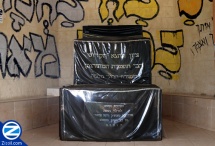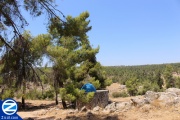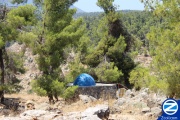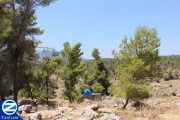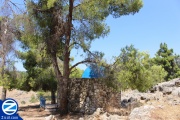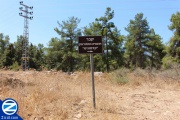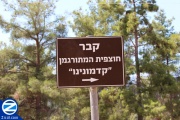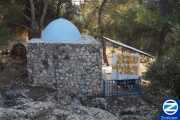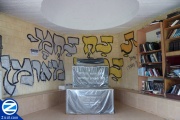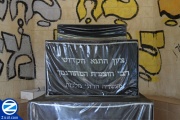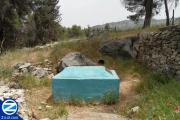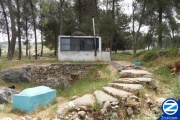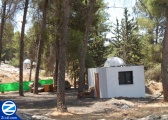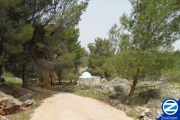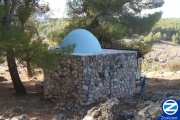Rabbi Chutzpis HameTurgeman
Rabbi Chutzpit HameTurgeman was a third generation Tana and the personal elucidator of the Nasi Rabban Gamliel, repeating out-loud his discourses. At age 130 Rabbi Chutzpit HameTurgeman was executed as part of the Hadrianic decrees and was considered one of the Ten Martyrs.
Contents |
[edit] Tana
Rabbi Chutzpis HameTurgeman was a third generation Tana and friends with Rabbi Yehoshua and Rabbi Eliezer. So great was Rabbi Chutzpis, that he was compared to Yonasan Ben Uziel. He was able to give over 170 approaches to 'Torat Kohanim'
[edit] Translator
Rabbi Chutzpis HameTurgeman was fluent in many languages. He served as the personal elucidator of the Nasi Rabban Gamliel. During his discourses Rabban Gamliel would speak in a low voice and Rabbi Chutzpis would repeat the teachings out loud so the entire Bais Medrash could hear. He had a very beautiful voice and when Rabbi Chutzpis HameTurgeman himself would give a sermon it was was widely attended by people just coming to hear him speak.
[edit] Amongst Asara Harugei Malchus
Rabbi Chutzpit HameTurgeman lived to 130 never loosing his handsome appearance despite his advanced age. When the Hadrianic decrees broke out Rabbi Chutzpit HameTurgeman hid in Tzipori along with Rabbi Yeshvav haSofer.
Eventually he was caught and brought before Hadrien who sentenced him to be executed. Rabbi Chutzpis HameTurgeman asked that his execution be delayed one day, as the next day was his birthday. When asked by the emperor what difference that made to him, Rabbi Chutzpit responded that it would allow him to recite the Shema another two times, at night and day. Enraged that he still clung on to his beliefs, Hadrien blasphemised against Hashem and then ordered Rabbi Chutzpis HameTurgeman stoned to death.
As part of the execution his tongue was torn out of his mouth. Elisha ben Avuyah saw the tongue of Rabbi Chutzpis HameTurgeman laying in the dust and could not fathom how such a holy mouth that uttered gems would now lay in the dust. This was one of the factors that caused him to go bad.
[edit] Kever Rabbi Chutzpit HameTurgeman
Rabbi Chutzpis HameTurgeman is buried underneath Tzfat, in the woods towards the right side under the ancient cemetery, just above Nachal Sechvi on its way towards Nachal Amud. Kever Chutzpit HameTurgeman is first mentioned by Rabbi Chaim Vital who describes its relative location and then notes that it is positioned in a single stone quarry, where rocks were carved out for building. Later travel dairies of other earlier visitors also describe the location, some stating that he is buried on the bottom of an ancient well.
Also buried near Rebbe Chutzpit is Yehoyada Hakohen and in relative proximity, Rabbi Natan HaBavli and Gabbai's version of kever Adino Haetzni.
[edit] Kadmonenue's Tzion
In that area is a deep hole that was carved out of the rock, this location has been passed down from generation to generation by the elders of Tzfat as the Kever of Rabbi Chutzpit HameTurgeman. So deep is this hole that the elders remember a few second pause when a pebble was thrown inside until it hit the floor. At some point the hole was sealed for safety reasons. Vaad LiHatzolas Kivrei HaKadmonim later came and built a Tzion directly above this hole. This hole fits perfectly the single stone quarry (as opposed to the general quarry by Adino Haetzni) described by Rabbi Chaim Vital and the 'well' described by the other diaries.
[edit] Gabbai's Tzion
Later Yisroel Meir Gabbai and his organization Ohali Tzadikim came and only saw the structure built by Kadmonanue. Not knowing about the deep hole underneath, they assumed it was just built in the estimated area. A few dozen meters away from the original Tzion is a large well, neighboring what might be called an old stone quarry. Gabbai assumed this was the correct location and built a second Tzion in the summit he estimates was originally a stone quarry, thereby trying to combine the testimonials of Rabbi Chaim Vital with the other early visitors.
Yisroel Meir Cheshin wrote a paper completely disproving Gabbai's Tzion. For one, the entire thesis of Gabbi does not even begin once it is recognized that there is a deep hole under Kadmonanues Tzion. A pit that much better fits the description of the 'Masaos'. Being that it is etched in stone rather then built from bricks like the 2nd well, it allows for a perfect combination of Rabbi Chaim Vital's testimony with that of the other travelers. Unlike Gabbi who has to say most of the travelers were mistaken about the Kever being in the actual well and is really nearby, in what is even debatable if it was ever a 'stone query'. Additionally Gabbi ignores a very strong tradition that was handed down mouth to mouth by the elders of Tzfat who would in the very least visit the Kever each year on Tisha Bav. There are even eye witnesses who personally saw Shmuel Horowitz doing Histatchus at the Kadmonenue location, while Gabbi brings his writings down as one of his proofs.
[edit] 9th of Av
It is an old Tzfat tradition to visit the tomb of Rabbi Chutzpis HameTurgeman on Tisha B'av and recite the Kina of 'Eleh Ezkira' that mourns the death of the Asara Harugi Malchus.
[edit] More Photos
- Kever Rebbe Chutzpis HameTurgeman Photo Gallery


